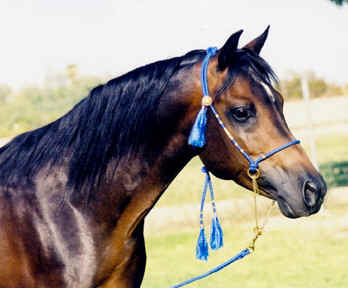
Bint Al Bahr Arabians
Preservation Breeders of Straight Babson Egyptians
 |
Bint Al Bahr Arabians Preservation Breeders of Straight Babson Egyptians |
![]()
Photo Tips - Page 5
 Now you are
ready to shoot. Move the horse to the selected background.
Pay attention to where the sun hits the horse.
A slight repositioning of you or the horse may improve your photo
tremendously. If the horse’s face
is in shadow the resulting photo will lose those essential details of the face
even though it looks like it might be okay through your view finder. Move your
position and or have the horse move to eliminate the shadow.
Now you are
ready to shoot. Move the horse to the selected background.
Pay attention to where the sun hits the horse.
A slight repositioning of you or the horse may improve your photo
tremendously. If the horse’s face
is in shadow the resulting photo will lose those essential details of the face
even though it looks like it might be okay through your view finder. Move your
position and or have the horse move to eliminate the shadow.
When taking
the photo hold your camera tight to your head with your elbows tight but relaxed
against to your body. Hold your breath as you squeeze the shutter button.
All this will help the clarity of your photo as well as insure your
framing of the shot hasn’t wandered off the intended target.
You should position yourself so you are shooting slightly up at the horse
if possible.
Stand well
back from the horse and use the zoom to bring the horse up close to you.
Being as far back as possible then zooming in will shorten the depth of
field which will blur the background slightly. It also will make your horses
proportions more realistic and avoid the “big nose, long face and tiny ears”
distortion that is so easy to get.
 Check the
background and make sure the horse is positioned in front of suitable
background. Watch for telephone poles, trees and other things that might
"grow" out of your horse. Sometimes lowering or raising
your camera slightly will hide those background flaws.
Check the
background and make sure the horse is positioned in front of suitable
background. Watch for telephone poles, trees and other things that might
"grow" out of your horse. Sometimes lowering or raising
your camera slightly will hide those background flaws.
Only now when the photographer is in position and ready to shoot should the horse see any of the ears up stuff. The less time he sees it, the longer he will retain his interest in it. Show only one ears up item at a time and start from farther away and move to where the horse takes an interest in it. Stop and continue to show the object and wait for the horse to lose interest. Listen for the photographer to direct you in the angle of the horses interest. When the horse is not longer interested do something different, move it differently, move it closer to the horse. Watch the horse’s reaction for clues on what works. Ears forward on a sleepy horse is not what you are looking for.
Your
cursor on the photos will tell you more about the photo and the horse.
![]()